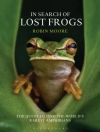For ten days, a number of neuroscientists met at Reisensburg to attend a series of lectures and discussions, an Institute, on animal learning. The students were drawn from a wide variety of disciplines, including anatomy, biochemistry, pharmacology, physiol- ogy and zoology. It is probably true to say that many of them had at best a sketchy knowledge about the learning behavior of animals, about the conditions which are necessary for learning to take place and about the theories that psychologists have constructed about the learning processes. Was the Institute of any benefit to those neuro- scientists whose interests lay in studying the functioning of the nervous system by manipulating it or probing it in some direct way? Some twenty years ago the answer to this question would probably have been "No"; and there is a very good reason why this view might have been held, especially by students of the mammalian nervous system. At that time most investigators used anaesthetised animals, or animals immobilized in some other way such as by surgically isolating the brain from the spinal cord, by dividing the brain at various levels or through the use of paralyzing agents. These con- ditions achieved two things. On the one hand, they allowed sub- stantial advances to be made, particularly in the analysis of sensory processing and in the analysis of the neuronal mechanisms of relatively simple reflex action. On the other hand, the experi- mental conditions virtually eliminated complex behavior.
M. E. Bitterman & V. M. LoLordo
Animal Learning [PDF ebook]
Survey and Analysis
Animal Learning [PDF ebook]
Survey and Analysis
购买此电子书可免费获赠一本!
语言 英语 ● 格式 PDF ● ISBN 9781468433876 ● 出版者 Springer US ● 发布时间 2012 ● 下载 3 时 ● 货币 EUR ● ID 4603650 ● 复制保护 Adobe DRM
需要具备DRM功能的电子书阅读器












